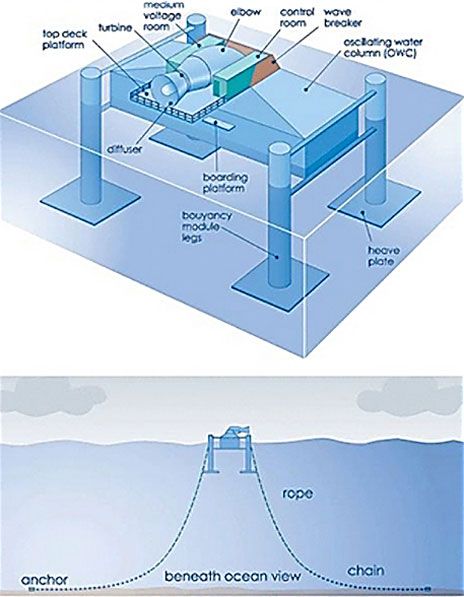The Latest Developments in Wave Power Technology
Posted by Big Gav on January 26, 2010 - 1:14am in The Oil Drum: Australia/New Zealand
Beyond Zero Emissions is organising a talk on Oceanlinx's wave power technology which might be of interest to Melbourne based readers - The Latest Developments in Wave Power Technology.
Guest speaker: Scott Hunter
Time: 6.30 ~ 8pm Monday 1st February 2010
Event location: Sans Frontiers Room, 2nd Floor, Kindness House, 288 Brunswick St, Fitzroy VIC.Scott Hunter is the Engineering Manager and Naval Architect for Oceanlinx. Oceanlinx is a leading renewable energy company based in Australia with a unique and efficient system for extracting energy from ocean waves.
Scott's current role as Engineering Manager involves assisting the general manager of engineering in bringing the concepts developed through R&D to reality.
In this discussion group we will discuss how wave power technology works, discuss current projects in NSW and its potential to provide zero carbon electricity.





For those who can't make it, there's an excellent 2008 Oceanlinx presentation online at
http://www.science.org.au/events/publiclectures/re/denniss.htm
Including an explanation of the very clever thinking behind their resonance chamber.
All that energy crashing onto the beach right in front of our eyes - why can't we see it???

;-)
There sure is a lot of energy in waves.The problem is how to harness it economically and reliably.
Any man made structure in the marine environment,especially the open ocean,is subject to a lot of stress and corrosion,expensive to build and to maintain.
I'm afraid I tend to look on both tidal and wave electricity generation as being on the technocopian end of the alternative energy spectrum.
Nice photo!
I think you are too gloomy in your assessment thirra.
Marine technology has been around a lot lot longer than wind... and we can use pretty well bog standard materials. Non of the fancy high tech composites.
The corrosion problem exists but is 'solvable' ... instead of Zn blocks, we now use Al blocks.
Yes there are stresses, but in all likely hood less than the torsion stresses experienced by large super tankers.
North sea oil rigs are pretty robust structures... and think of those rigs that got blown around by Katrina but survived.
Wave is more predictable and measurable than wind. Our over the horizon radar can see the ocean state 1000s of kms away... and since the 2004 tsunami, there are more ocean wave buoys out there.
For the same amount of energy a wave power unit can be smaller simply because the density of the working fluid is greater.
And also the wave field is more consistent... unlike wind, which can be gusty.
The issue for wave has been the coupling or transforming mechanism. The device mentioned in this article sounds very promising. The units are much smaller than a wind power unit of the same power. I think units can be placed closer together as well.
When I look at that photo I can see plenty of kinetic energy waiting to be harnessed !
http://peakenergy.blogspot.com/2008/07/boogie-power-and-victorias-circui...